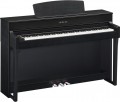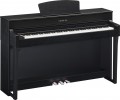More features
Additional features and sound customization options provided by the instrument in addition to those listed above. In this paragraph, usually, various original proprietary technologies and solutions are indicated; the specific meaning of these functions is best specified in the documentation for the tool.
Built-in acoustics
The power of the native acoustics installed in the Digital Piano.
This indicator directly affects the maximum volume that the instrument is able to produce "on its own", without connecting external speakers. At the same time, it is worth noting that many manufacturers go to the trick and indicate in the characteristics not the rated power (rms power when operating at full volume), but the peak power, which is the highest power that the acoustics can deliver at short “ups” of volume. Peak power values can be quite impressive — in the tens and hundreds of watts — but these figures have a very indirect relation to the actual capabilities of the speakers. Therefore, before choosing, it is worth clarifying what kind of power is mentioned in the characteristics. To do this, it is not necessary to look for detailed data on the instrument, it is enough to compare the power of the speakers with the power consumption (see below): if the claimed power of the acoustics is greater than the power consumption of the entire instrument, then the manufacturer indicated exactly the peak value.
Number of bands
The number of bands provided in the Digital Piano's native acoustics.
In single-way acoustics, the speakers are responsible for reproducing the entire frequency range. Such systems are simple and inexpensive, but their amplitude-frequency response is far from perfect — most often they reproduce the mids well, but the bass turns out to be weak and unsaturated, the high frequencies are fuzzy and blurry. This is due to the fact that for each frequency there are separate requirements for the design of the speaker, and it is impossible to combine them in one speaker.
Thus, loudspeakers, including the built-in speakers of digital pianos, can be split into bands when the design provides for specialized speakers for a certain group of frequencies. The most advanced variant found in digital pianos is three-way, with separate sets of drivers for bass, mids, and treble. This allows you to achieve high-quality and reliable sound throughout the entire range, but complicates and increases the cost of the design. Therefore, three-way acoustics are rare, mainly in top-class instruments. But in mid-range instruments, two-way speakers are more often used (high frequencies on one set of speakers, medium plus low frequencies on the other).

